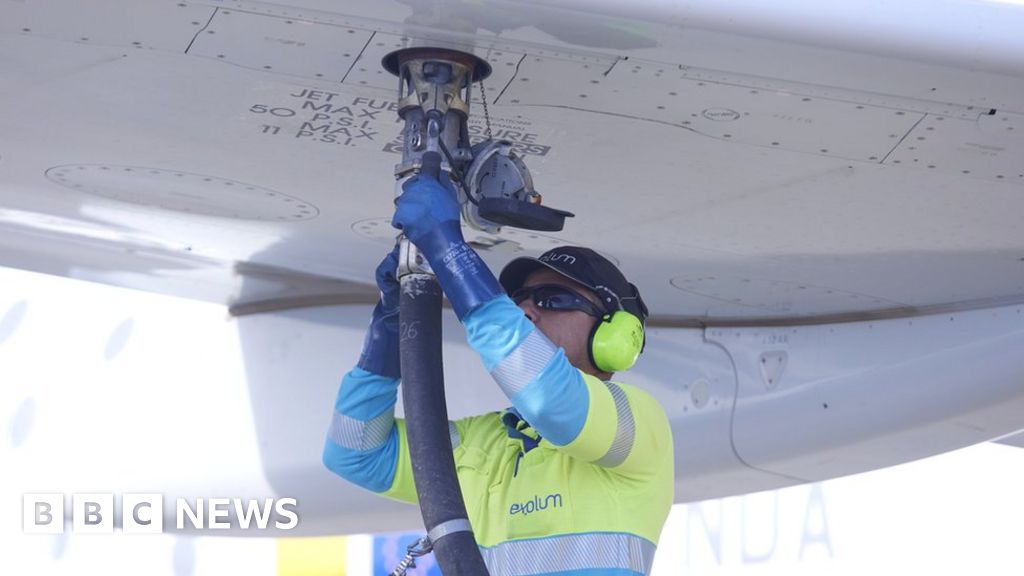
Hydrogen is being touted as a fuel for aircrafts, but handling it at airports will be challenging.
On a typical day 1,300 planes take off and land at Heathrow Airport, and keeping that going requires around 20 million litres of jet fuel every day.
That’s the equivalent of filling up your car around 400,000 times.
It’s a massive operation, with fuel piped to the airport direct from refineries and then stored at two facilities know as fuel farms.
“The amount of fuel that passes through Heathrow is enormous. It’s about half of the UK’s jet fuel requirement,” says Matt Prescott, head of carbon strategy at Heathrow.
… To be of any use to the aviation industry, hydrogen needs to be in its liquid form, which involves chilling it to minus 253C.
Handling a liquid at that kind of temperature is immensely challenging. Given the chance, liquid hydrogen will “boil-off” and escape as a gas – potentially becoming a hazard.
So tanks, pipes and hoses all have to be extra-insulated to keep the liquid cold.
On a typical day 1,300 planes take off and land at Heathrow Airport, and keeping that going requires around 20 million litres of jet fuel every day.
That’s the equivalent of filling up your car around 400,000 times.
It’s a massive operation, with fuel piped to the airport direct from refineries and then stored at two facilities know as fuel farms.
“The amount of fuel that passes through Heathrow is enormous. It’s about half of the UK’s jet fuel requirement,” says Matt Prescott, head of carbon strategy at Heathrow.
… To be of any use to the aviation industry, hydrogen needs to be in its liquid form, which involves chilling it to minus 253C.
Handling a liquid at that kind of temperature is immensely challenging. Given the chance, liquid hydrogen will “boil-off” and escape as a gas – potentially becoming a hazard.
So tanks, pipes and hoses all have to be extra-insulated to keep the liquid cold.












